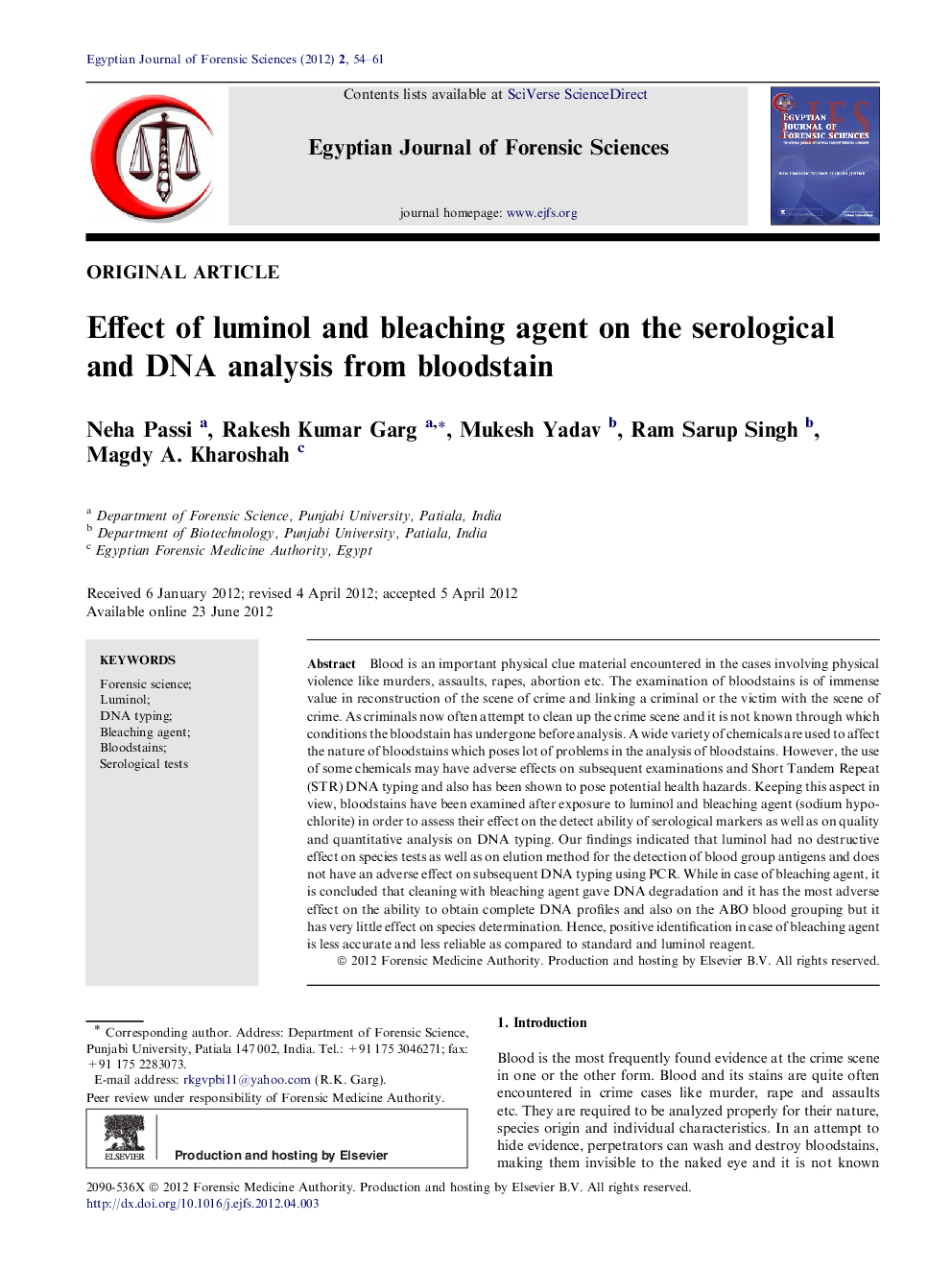| Article ID | Journal | Published Year | Pages | File Type |
|---|---|---|---|---|
| 1097585 | Egyptian Journal of Forensic Sciences | 2012 | 8 Pages |
Blood is an important physical clue material encountered in the cases involving physical violence like murders, assaults, rapes, abortion etc. The examination of bloodstains is of immense value in reconstruction of the scene of crime and linking a criminal or the victim with the scene of crime. As criminals now often attempt to clean up the crime scene and it is not known through which conditions the bloodstain has undergone before analysis. A wide variety of chemicals are used to affect the nature of bloodstains which poses lot of problems in the analysis of bloodstains. However, the use of some chemicals may have adverse effects on subsequent examinations and Short Tandem Repeat (STR) DNA typing and also has been shown to pose potential health hazards. Keeping this aspect in view, bloodstains have been examined after exposure to luminol and bleaching agent (sodium hypochlorite) in order to assess their effect on the detect ability of serological markers as well as on quality and quantitative analysis on DNA typing. Our findings indicated that luminol had no destructive effect on species tests as well as on elution method for the detection of blood group antigens and does not have an adverse effect on subsequent DNA typing using PCR. While in case of bleaching agent, it is concluded that cleaning with bleaching agent gave DNA degradation and it has the most adverse effect on the ability to obtain complete DNA profiles and also on the ABO blood grouping but it has very little effect on species determination. Hence, positive identification in case of bleaching agent is less accurate and less reliable as compared to standard and luminol reagent.
